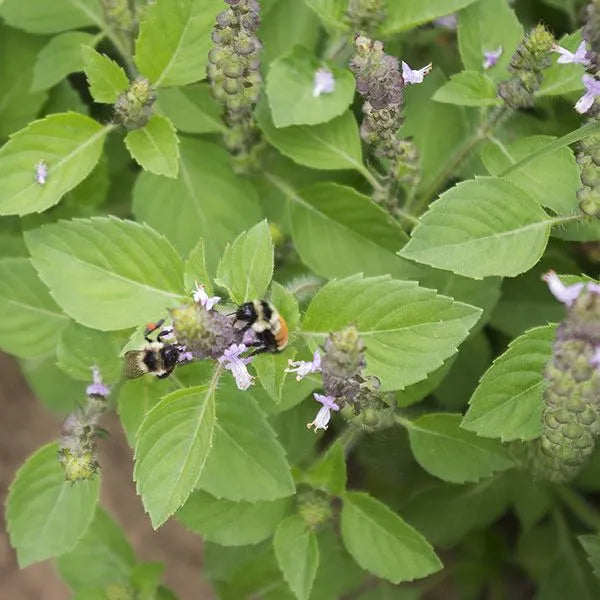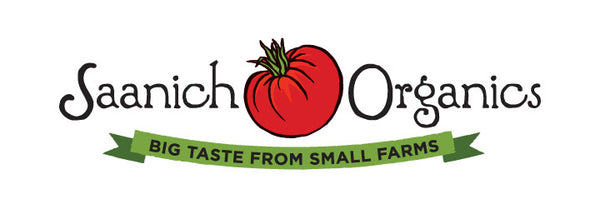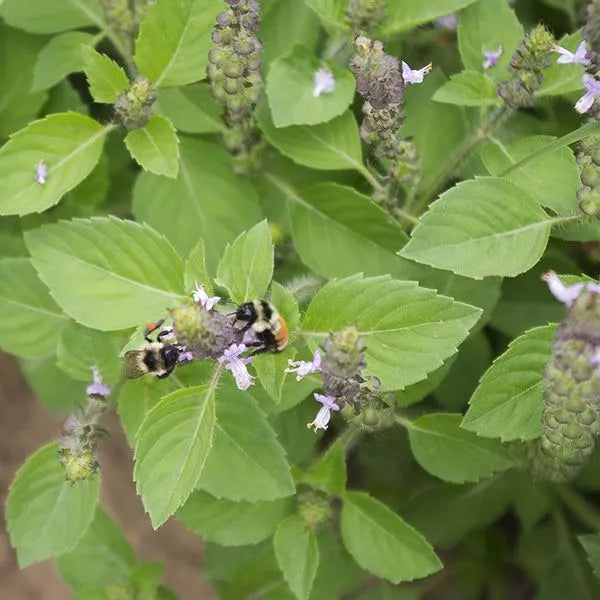My Store
Sacred Holy Basil
Sacred Holy Basil
Couldn't load pickup availability
Also known as Tulsi, this herb is commonly grown in Southeast Asia and is valued in Ayurvedic medicine due to its host of therapeutic and nutritional qualities. From the seeds to leaves to flowers, all parts of the plant are useful. Immune support and helping with stress and anxiety are just two of its many healthful attributes. All in all, holy basil is considered a tonic for the body, mind and spirit; much needed in our times! This strain, developed by Frank Morton, is suited to our temperate conditions in North America. As a bonus, it is a huge attractant for beneficial insects!
Start indoors mid-April to mid-May; seed 1/2 cm deep. Transplant out or direct seed in full sun when the soil is warm. Also does great in containers in a warm and sunny spot.
50 days
Certified organic in British Columbia. IOPA # 1606, 1105, 1920.
How to Harvest Holy Basil Seeds
Fast Facts
Latin: Ocimum tenuiflorum
Cross Pollination: Other holy basil varieties, but not common culinary basil (Ocimum basilicum)
Seeding and Care
Transplant at 12” spacing. Pinch off leaders a couple of times to encourage bushy plant growth but don’t pick excessively, allow plants to get large and bushy. Care for plants as usual and rogue out small, deformed, sickly or fast-bolting plants. Flowering stalks will attract all kinds of bees and beneficial pollinators to your garden!
Seed Maturity
Basil seeds will mature from the base of the flowering stalk upwards, in the same order that their flowers emerge. As the seeds at the bottom begin to dry and turn black they will drop to the ground, but the tops of the stalks may still be flowering. Gently turn the flowering stalk upside down to check the seed maturity. When the very bottom seeds have dropped and most of the seeds in the middle of the stalk have formed and begun to turn brown but not yet turned black, cut the stalks and gently transfer to a tarp. Allow the plant material to dry and seeds to ripen.
Seed Cleaning
Thresh the seeds by laying the entire dry seed stalks on a tarp and stomping and shuffling on the plants to crack open the pods and detach the seeds. Since basil seeds are so small, you may choose to do the threshing inside a bag to prevent seeds from rolling off the tarp. It’s important that seeds are very dry at this stage to prevent them being crushed by the threshing process. Shake the threshed material through a screen, allowing the seeds to pass through and the larger debris to remain on the top. Then, winnow using wind or a fan, pouring seeds from one container to another while allowing the lighter chaff to blow away.


